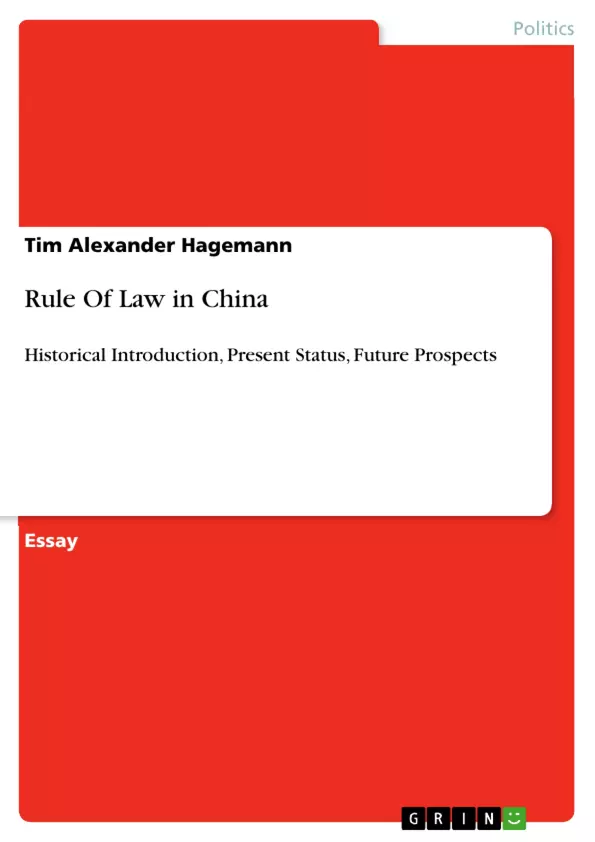The People's Republic of China in 2013: 1.3 Billion people on the verge of becoming part of the - expected - ruling nation of the 21st century. By smartly adapting western style economic policies to replace the hence centrally planned by a well functioning market economy, the former developing country has managed to rise in just 3 decades from the ashes of the political chaos of the cultural revolution to the olymp of the world's leading industrialized nations. Reaching an economic accural rate of annually over 8 Percent, it already managed to took over the place of Japan in terms of GDP and is now only second to the United States, while the gap between them continues to decrease every year.
Inhaltsverzeichnis (Table of Contents)
- Introduction
- Development of Rule of Law in China
- Imperial Rule
- Late Empire and Republic of China
- The PRC under Mao Zedong
- The PRC after the Cultural Revolution
- Present Situation
- A small prospect on the further development
Zielsetzung und Themenschwerpunkte (Objectives and Key Themes)
This work aims to explore the development and current status of the Rule of Law in China. It delves into the historical origins of Chinese jurisprudence and the evolution of the concept of Rule of Law in the country. The study also investigates the contemporary situation and ventures a prognosis on the future prospects of Rule of Law in China.
- Historical development of Rule of Law in China
- Influence of Legalism and Confucianism on Chinese legal thought
- Impact of the Cultural Revolution on the legal system
- Comparison of Western and Chinese conceptions of Rule of Law
- Future prospects of Rule of Law in China
Zusammenfassung der Kapitel (Chapter Summaries)
The introductory chapter provides an overview of China's rapid economic growth and explores the question of whether this modernization extends to its legal system. It discusses the different theoretical perspectives on Rule of Law and establishes the framework for the subsequent analysis.
Chapter 2 examines the evolution of Rule of Law in China, starting with the Imperial period. It highlights the influence of Legalism and Confucianism on Chinese legal thought, emphasizing the distinct approaches of these philosophies. The chapter further explores the legal landscape during the late Imperial period, the Republic of China, and the era of Mao Zedong.
The third chapter focuses on the present situation of Rule of Law in China, highlighting the significant changes and challenges faced by the legal system.
The final chapter delves into the future prospects of Rule of Law in China, providing insights into potential developments and challenges.
Schlüsselwörter (Keywords)
The key terms and concepts explored in this work include Rule of Law, Chinese jurisprudence, Legalism, Confucianism, Cultural Revolution, economic development, political reform, and the future prospects of the Chinese legal system.
- Quote paper
- Tim Alexander Hagemann (Author), 2013, Rule Of Law in China, Munich, GRIN Verlag, https://www.grin.com/document/272053



